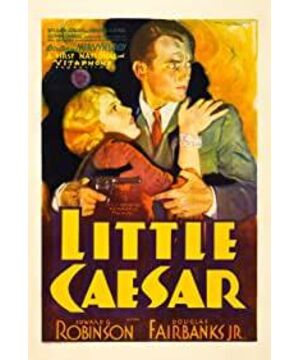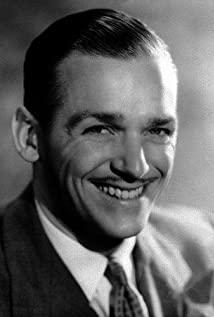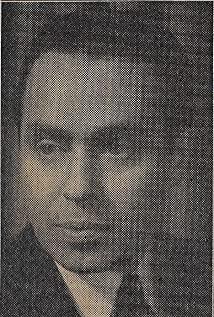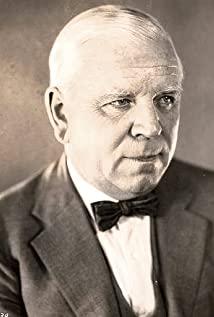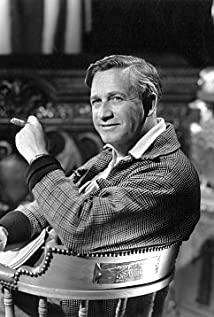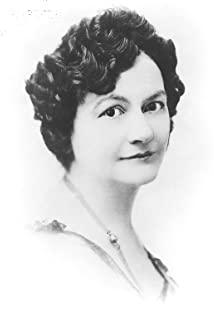The history of American gangster or crime films can be traced back to Griffith's time. His 1913 film "The Swordsman of the Poor Lane" is considered the first gangster film in American cinema. Later, Sternberg's "Underworld" can be said to be an earlier depiction of the gangster career that appeared during the period of Prohibition and the Great Depression in the United States. But for American audiences and film historians alike, the basic pattern of the gangster genre seems to have popped up suddenly from the 1930s. And "Little Caesar" is undoubtedly the initiator of this model.
Unlike Westerns, another long-established genre in Hollywood, gangster films are drawn not from history or legend, but from the realities of contemporary American life, often even from blockbuster news. Like many earlier gangster films, Little Caesar is based on real people and events. The prototype of Enrico in the film is the Chicago crime boss Al Capone, who, like Enrico, went from an ordinary gunman to the boss of the underworld gang. Another underworld leader in the film, Montana, was the incarnation of Big Jim, the leader of the crime syndicate at the time, who died in 1920 under the gun of Capone. And the manipulator of the underworld group, Bick, was born out of then-Chicago Mayor Bick Bill Thompson - he was a behind-the-scenes supporter of Capone. Even many of the events in the film have their origins. For example, in the film, Enrico's banquet was done by another gang leader in reality, but it was widely reported by the newspapers at that time, which can be said to be well documented.
But obviously, being based on reality does not mean that gangster films have greater authenticity than other types of films. Its more important significance is that it shows that the gangster film is the product of the increasing "urbanization" of contemporary American life - the countless American publics living in contemporary cities and feeling the repression of the order of modern civilization are in desperate need of a film that belongs to themselves and this place. An icon of city life. It is at this point that "Little Caesar" was "born at the right time" and entered the classic ranks of gangster films.
As a description of a modern urban life, tall buildings, streets on rainy nights, banks, gas stations, dim bars and apartments on the top floors of the city constitute the material environment of modern civilization in gangster films. And the protagonists in this type of film, as little people struggling in the lower society, challenge the hierarchical and increasingly objectified urban civilization with guns in their hands - this is the gangster film that "Little Caesar" showed us a basic pattern. However, an obvious difference between the gangster films of the 1930s and the films that followed was that they did not analyze the social motives that lead the protagonist to commit crime, but bluntly shaped the kind of innocence in the contemporary city. Bandit idol of the spirit of government. Enrico in Little Caesar is a simple-minded, controlling and determined character. The film begins with him and his early buddies robbing a gas station, when Enrico is already a full-fledged robber, a brutal, aggressive gangster who seems to be born with it. His creed is to gain power at all costs. When he read about the "hot" criminal activities of the city's underworld in the newspaper, he immediately decided to rush there to get his "own" share. After joining the underworld gang, Enrico became more rampant, defying the authority of the legal institution and the persuasion of the underworld leaders, and opened fire everywhere, and soon reached the pinnacle of power. With a fast-paced and even fragmented narrative, the film depicts Enrico's journey from a nobody to a fortune and finally to ruin, and seems to have no time to focus on the analysis of his character and the performance of his social environment. This "early" gangster-movie narrative would seem today to undercut the film's depth, yet it was an important reason for the success of these early gangster films. What the general public, who feels deprived of themselves in the "orderly" urban life, needs not a sociological "robber," but, on the contrary, a boldly civilized order and this The "building blocks" of civilization—banks, gas stations, and even the police—challenge actions. "Little Caesar" is in line with the needs of public psychology on this point. Therefore, although the film quoted a famous saying of St. Matthew in the opening subtitles, "Whoever takes up the sword will die by the sword", and in its depiction of the ups and downs of the life of "Little Caesar", it always runs through this Allusions of retribution contained in the famous quote; however, there is also a tendency in Little Caesar and many of the gangster films that follow to treat those who dare to flout social authority and live in a law established by their own laws. people in the rising world
In "Little Caesar" we can also see another distinctive feature of the "classical" robber figure. Unlike later films such as The Godfather, which depicted syndicated crime and the strict, organized eulogies of such criminal syndicates, the early "robbers" were more thoroughgoing "anarchists." There is a more distinctly individualistic quality about them—a more idealistic color by American ideological standards. They seem to be the "Western Cowboys" in the contemporary city, fighting against the police who represent civilized order and with other robbers. This "individualized" feature undoubtedly satisfies the psychological needs of urban audiences who increasingly feel lost, and makes the violent behavior of robbers eventually go beyond the scope of crime in the general sense, and makes the audience dare to boldly confront those "robbers" Get psychological approval. Enrico in "Little Caesar" can be said to be an initial example of this early bandit figure. Not only has he parted ways with his early buddies, but he has recklessly challenged the leaders of the underworld. The director convinces the audience that it is his wild and thoroughly "anarchic" character that enables him to break free from the control of the civilized order and quickly transform from an ordinary person in the lower class into a successful controller of a modern city.
In terms of plot, "Little Caesar" seems to have laid the initial foundation for the plot pattern in later gangster films that begins with depicting the protagonist's fortune or criminal behavior, and ends with the most famous robber dying at the gun of the police. But in fact, the ending pattern of "Little Caesar" and the other two early gangster films "Public Enemy" and "Scarface" has a very different meaning from the ending of a large number of gangster films that follow. In the era when the above-mentioned films were born, the American film industry had not yet implemented the strict moral inspection and production norms that followed. Therefore, Enrico in "Little Caesar" - the ending of Little Caesar's death under the gun of Detective Tom not only There is a kind of tragic color of a hero's end - Enrico still maintains his "hero nature" in the wandering alone: calling to answer the challenge of the police, which leads to death - and more gangster films than later The simple moral exhortation contained in it contains a richer connotation of human nature. An American film theorist has pointed out that in the original three gangster classics, the protagonists, the robbers, did not die because they were too clumsy or because the police were too strong; The fact is that these robbers have not yet been able to get rid of the fetters of "human weakness", and they show mercy at critical moments. In "Little Caesar", this is manifested in the fact that Enrico could not bear to attack his former companion Joe when he learned that he was going to betray him, thus becoming the beginning of the decline of the once majestic "Little Caesar". From this, it is not difficult for us to see that in the history of American gangster films that have been under fire for decades, those early gangster films that also depict murderous road robbers have a kind of "purity" in the description of their protagonists. ”, sentimental and idealized colors. And just after the early gangster films that started with "Little Caesar" came out, due to the protests of some social groups and the public, a stricter censorship system began to be implemented, and the position of this idealized gangster image on the screen was finally represented. Replaced by the police of social order and justice, it also marked the end of an era of gangster films.
View more about Little Caesar reviews


